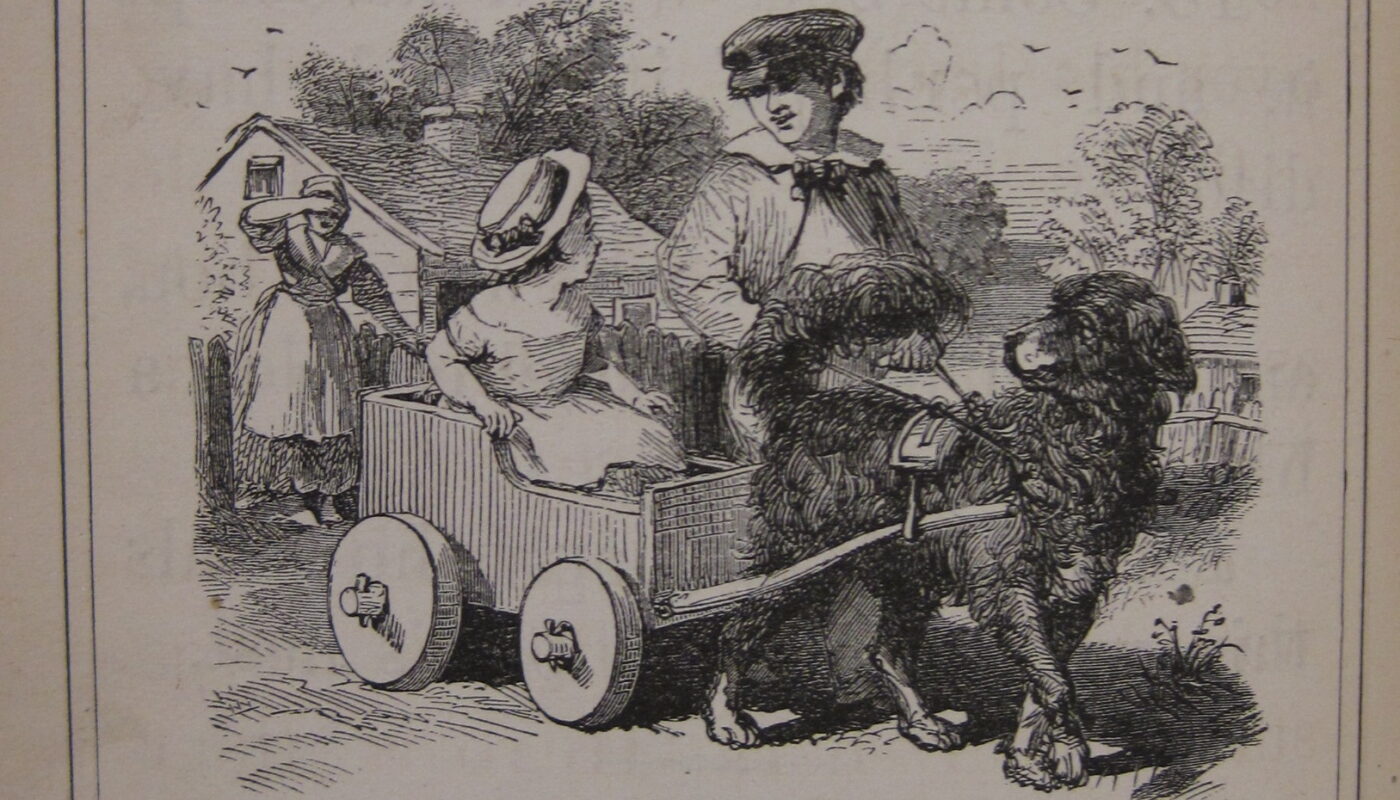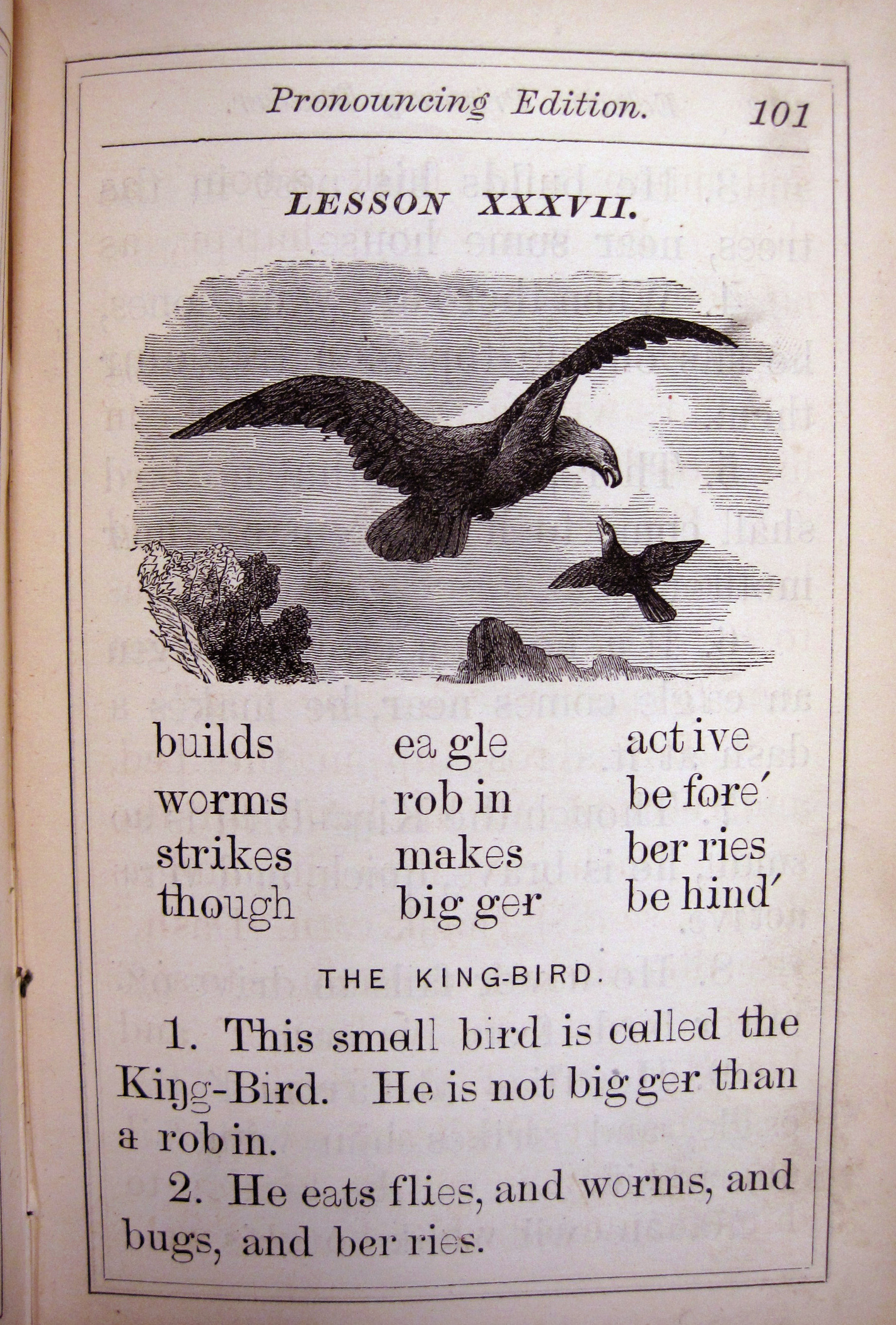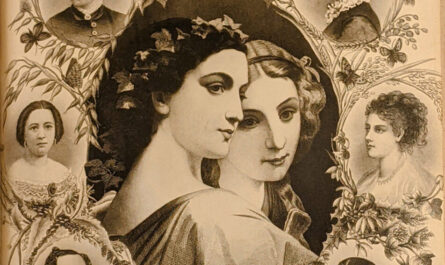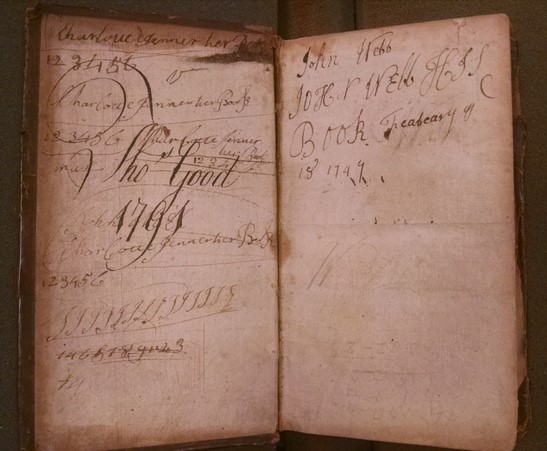The McGuffey Eclectic Readers are some of the most famous textbooks in the history of American education. From 1836 to 1920 half of U.S. school-aged children used a McGuffey Reader, with over 120 million copies sold. Looking to compete in the growing school book market, the publishing house Truman and Smith asked former rural schoolmaster-turned-philosophy professor William Holmes McGuffey to produce reading textbooks for them. McGuffey compiled selections from his own writings and borrowed from other literary sources, including the Bible, to create a multi-volume work with six levels of difficulty.
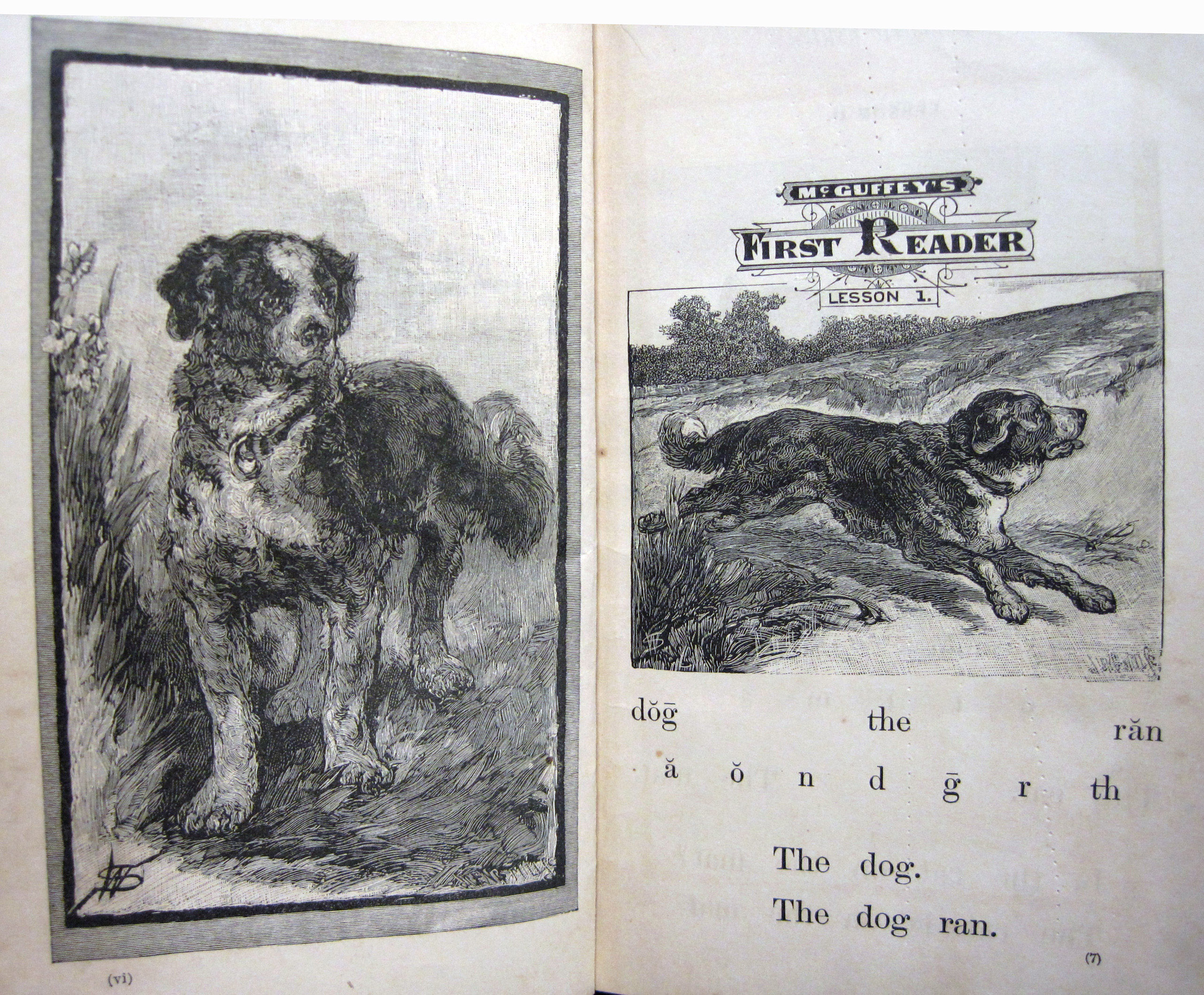
The Readers were among the earliest school books to introduce vocabulary gradually, control sentence length, use word repetition, include guides for teachers, and employ illustrations that corresponded to the lessons’ content. Colonial-era books presented new vocabulary in lists, while McGuffey introduced new words in the context of real literature. He used neighborhood children to test his selections for different ages and reading abilities. Many of the readings were overtly religious, emphasizing Calvanist values and spirituality. Later editions removed the religious messaging and texts in order to appeal to a wider audience. The books appeared just as the free public school movement was gaining national momentum. The graded series coincided with the needs of schools that were starting to divide children into classrooms by age. Increased production and lower prices brought about by mechanization enabled publishers to meet the demands of this new market. Truman and Smith aggressively marketed the Readers by sending traveling salesmen school to school. When states began to adopt statewide textbooks in the 1860s, they jumped on the opportunity, eventually becoming the reading textbook for thirty-seven states. Changing curriculum and societal values slowly decreased the demand for the Readers, but they never entirely disappeared and are still in print today. Special Collections’ six volumes come from different editions published between 1853 and 1879.
